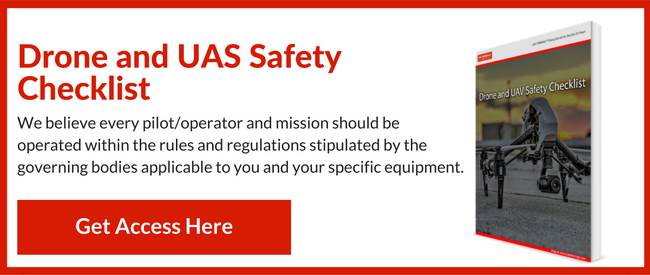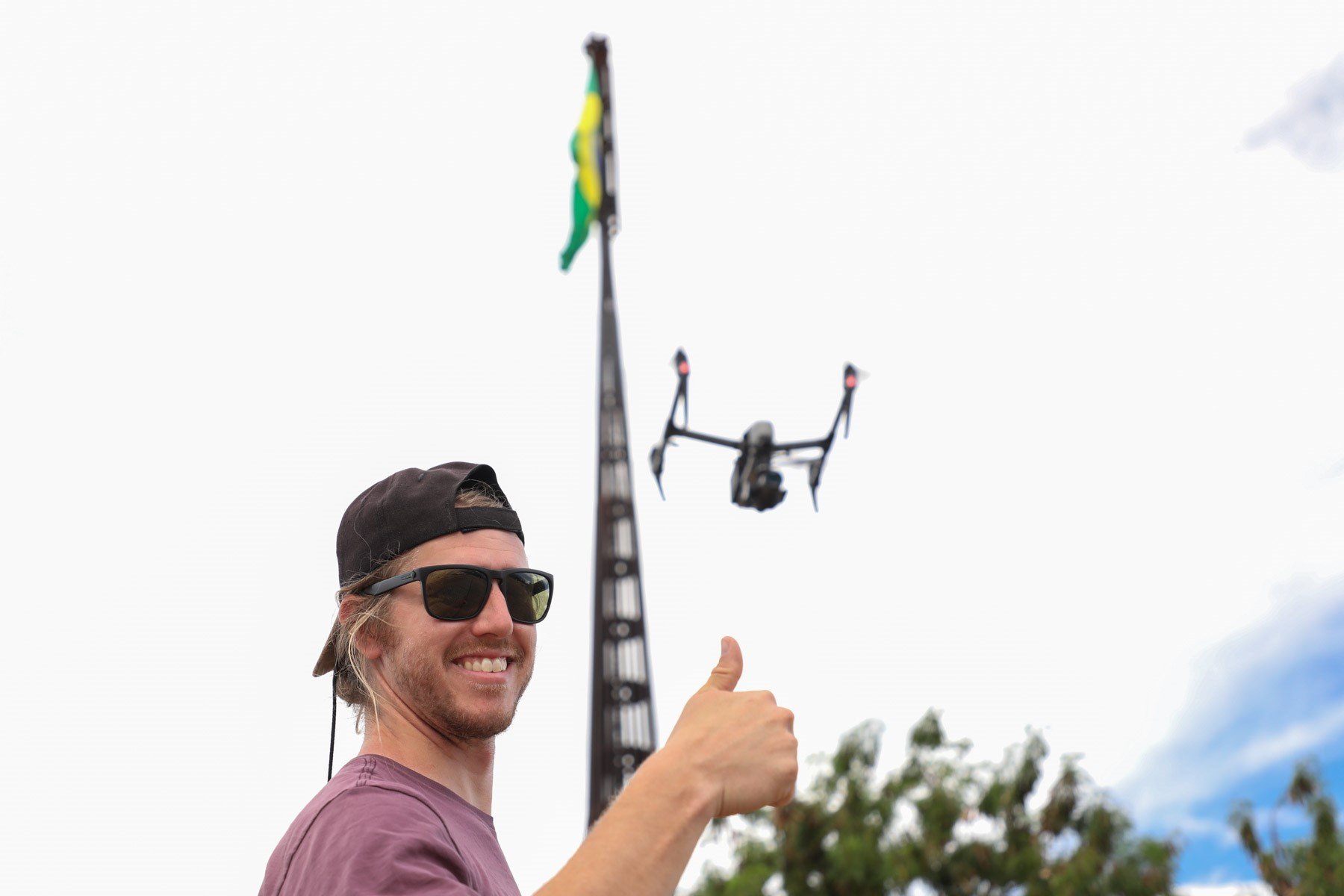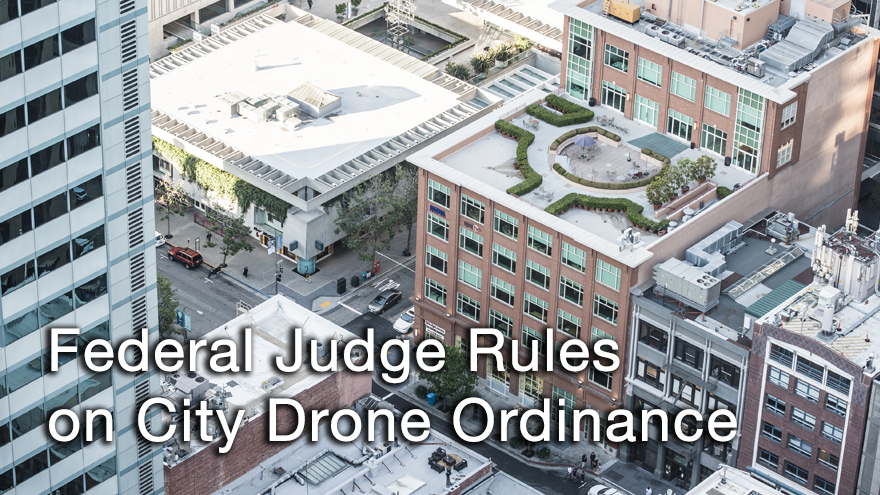
Utility inspectors are currently using aerial thermal imaging to perform inspections in a more efficient and safe way. With Unmanned Aircraft Systems (UAS) equipped with thermal imaging technology, inspectors can reach new heights and see things invisible to the naked eye, quickly and safely.
How UAS With Thermal Imaging Works
Unmanned Aircraft Systems are small aircraft, otherwise known as drones, that are piloted remotely. UAS can be equipped with a wide range of technology to accomplish tasks that would be difficult for a normal manned aircraft with limited maneuverability. Thermal imaging uses the radiation given off by most objects to detect differences in heat between the object and its surroundings. It allows certain items or substances to stand out from the background and in some cases be seen through walls and other obstacles.
How Inspectors Are Using UAS Equipped With Thermal Imaging
Last year, The Wall Street Journal reported that “San Diego Gas & Electric Co. received permission from the Federal Aviation Administration to use the unmanned aircraft to scout its Southern California service area. The company joins a handful of other utilities, including Southern Co. of Atlanta and Commonwealth Edison Co. of Chicago, that have been approved to use drones for inspecting remote infrastructure.” The article goes on to report that Andrew Phillips, director of transmission and substation analysis for the Electric Power Research Institute in Charlotte, N.C. predicted that one day drones would “be equipped with infrared cameras and other gear enabling them to look for overheated equipment—usually a sign of trouble—and replace expensive inspections done today with helicopters.” That prediction has come true and today thermal imaging-equipped drones are being used as Mr. Phillips suggested.
Below are examples of the ways in which UAS equipped with thermal imaging technology are being used by the electrical power and oil and gas industries.
Using UAS Thermal Imaging For Electrical System Inspections
With aerial thermal imaging, inspectors are able to quickly and easily identify areas of concern along power grids and antennas. Loose electrical connections give off heat and thermal imaging makes these hot spots stand out against the relatively cold background. Hot spots can be detected by aerial thermal imaging in electrical equipment such as transformers, power lines, switches and other associated equipment. Not only is this quicker it's also safer as it reduces the number of employees working near the inherently dangerous electrical equipment.
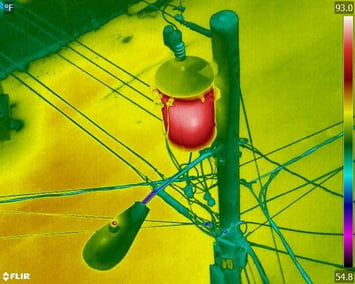 UAS are particularly effective for inspecting damaged power lines and electrical substations after storms and natural disasters. Drones can safely navigate hazardous terrain such as damaged buildings and areas blocked by trees. They can perform a scan of the area, reporting back accurate data and analysis of the affected power lines, more quickly and at a lower cost than inspections done by helicopter, airplane, and vehicle. By providing faster surveys of the area, repair teams can be dispatched to the exact locations more quickly.
UAS are particularly effective for inspecting damaged power lines and electrical substations after storms and natural disasters. Drones can safely navigate hazardous terrain such as damaged buildings and areas blocked by trees. They can perform a scan of the area, reporting back accurate data and analysis of the affected power lines, more quickly and at a lower cost than inspections done by helicopter, airplane, and vehicle. By providing faster surveys of the area, repair teams can be dispatched to the exact locations more quickly.
It's a fact that trees are one of the greatest threats to power lines. If trees make contact with power lines, whether by falling down or growing into them, they can cause power outages and dangerous fires. Power lines must be routinely inspected to ensure that this risk is abated. With aerial thermal imaging, these inspections are much easier. Drones can quickly scan the treeline and construct a 3D map showing points of potential concern.
Using UAS Thermal Imaging For Pipeline Inspections
Thermal imaging is especially useful for detecting and monitoring oil spills. UAS equipped with infrared cameras can fly over large bodies of water and areas located in inhospitable climates to survey oil spills and natural gas leaks. As reported by Reuters, “Laid end to end, the more than 300,000 miles of natural gas pipelines that crisscross the United States would circumnavigate the planet 12 times. There’s a lot of money to be saved by reducing the number of manned flights on these routes.” By inspecting remote oil rigs and thousands of miles of pipeline carrying oil and gas, drones can see the unseen and report areas of concern before fires and explosions potentially occur. Over the past few years, BP and Royal Dutch Shell have been using drones to inspect their pipelines while Apache Corp. has used them to monitor flare stacks at a gas plant in the United Kingdom.
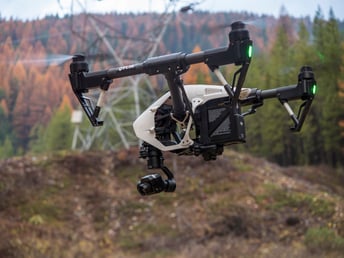 Now that the FAA has released their regulations regarding the use of UAS for commercial purposes we can expect to see more power, oil and gas, and other utility companies expanding or initiating their use of drones equipped with thermal imaging technology.
Now that the FAA has released their regulations regarding the use of UAS for commercial purposes we can expect to see more power, oil and gas, and other utility companies expanding or initiating their use of drones equipped with thermal imaging technology.
The Advantages of UAS for Utilities Inspections
- Increased worker safety
- Faster data collection and analysis
- Reduced labor costs
- Improved response time
- Reduced equipment costs
Earlier this year, PPL Electric Utilities reported their success in implementing a drone program for power line inspections. An example of their use of drones was when “electrical clearances were impeding a substation structure suspected to be the source of a recent line interruption. A drone was called in to inspect the site, as a helicopter would be too large to access the area, and it easily assessed the specific location of the line fault, facilitating repair by crews.” PPL was one of the first US utility companies to receive FAA clearance to use UAS technology. You can read the complete article here which details their use of drones to inspect transmission lines.
The UAS THERMALS™ professional team offers UAS and thermal imaging technology tailored to utility companies. Our thermal packages are ready to deploy and make use of the latest in high-resolution thermal imaging technology. With UAS equipped with thermal imaging, you can perform quick and accurate utilities inspections safely and at a reduced cost. You can learn more about the technology we offer by visiting us here.

